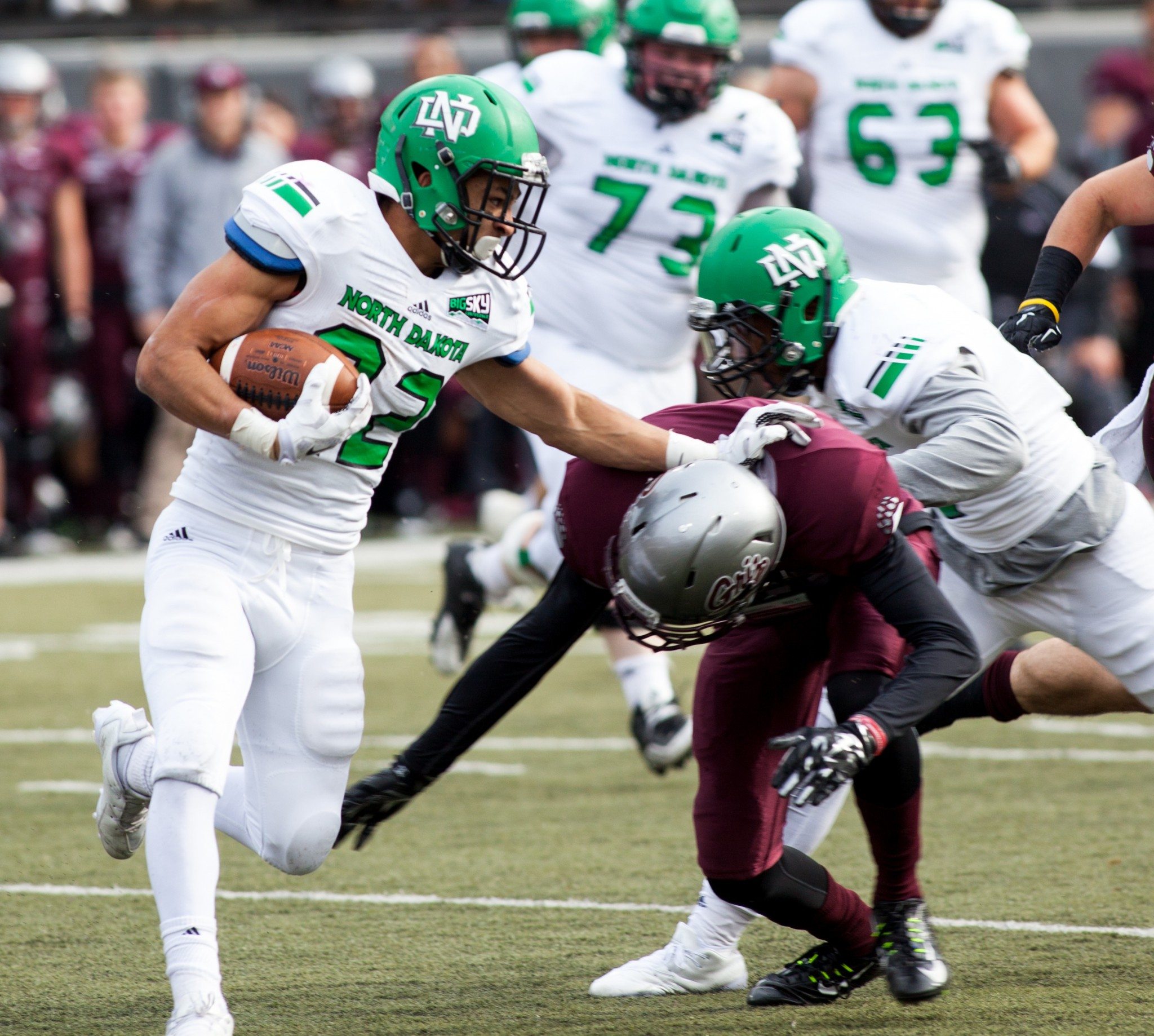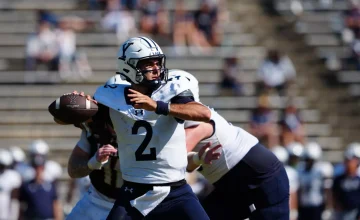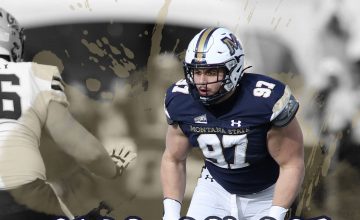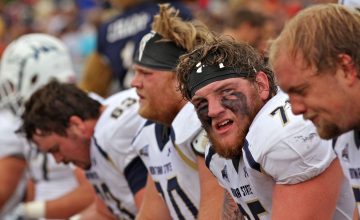At the first staff meeting after taking over as the head football coach at his alma mater, Bubba Schweigert made a pact with his staff.
North Dakota’s new head football coach did not talk about timetables or logistics or specifics. But he had a broad vision for UND, one the Fighting Hawks continue to build momentum toward as Schweigert enters his third season at the helm.
“Our vision for the program is to move football to the top of the Big Sky and we wanted to do it as quickly as possible,” Schweigert said in an interview in June. “That was our goal in 2014 and that was our goal in 2015 and we aren’t there even if we made some progress. It will remain our goal because when we are able to win a Big Sky Conference championship, we are automatically in the tournament and when you are in the tournament, you have a chance to be national champs. We feel if it can be done in Missoula, Bozeman and Cheney, Washington, in Fargo, why can’t it be done in Grand Forks? We have a lot of work to do but that’s what drives us day by day.”
The goal of winning the conference championship is certainly a common one among the Big Sky’s 13 football teams. But North Dakota is trying to reclaim its rich tradition while still trying to carve out its niche in the region, within its own decorated state and even within its own athletic department.
In April, North Dakota advanced to its 22nd Frozen Four and played in its 13th Division I national championship hockey match. UND’s 5-1 win over Quinnipiac gave the school its eighth national championship banner, further affirming North Dakota as one of the most prestigious hockey powers in North America.
“It’s been great for our university,” Schweigert said. “We are very proud of our team. Coach Barry and I are good friends. I know his winning culture is something we talk about throughout our department. Not only is this a great hockey town but a great university town. People in Grand Forks and people throughout the region are very proud of the University of North Dakota. I think things like this are contagious.”
Meanwhile, 80 miles to the south of Grand Forks in Fargo, North Dakota State continues to dominate the region’s FCS headlines. UND’s storied rival has granted a game to the Fighting Hawks just once (last season) since NDSU bolted the North Central Conference for Division I in 2004.
For years, UND and NDSU battled for NCC supremacy. Between 1925 and 2004, the Bison won 25 NCC football titles while UND won 21. NDSU claimed seven Division II national titles before moving up to Division I in 2004. North Dakota played for two national titles and won the 2001 Division II crown before moving up to Division I in 2008.
“We have a long, winning tradition in our athletic department going back to our North Central Conference days,” Schweigert said. “Our rivalry with North Dakota State has been a big deal around here for a long, long time. We hope to get back to that tradition.”
Since the Bison left the NCC, their rise has been meteoric. NDSU won the Great West in 2006 and has claimed the last five Missouri Valley and FCS national championships. Meanwhile, UND has searched to find its place in the FCS. Chris Mussman led the Fighting Hawks into the Division I era, claiming the Great West title in 2011, the season before joining the Big Sky. But an 8-14 record that included just five Big Sky wins in two seasons cost Mussman his job.
Since Schweigert took over in January of 2014, UND has been mounting a rise of its own. Schweigert’s first season produced a 5-7 record but North Dakota’s defensive improvements were marked. Last fall, thanks a revamped offense complete with a homerun threat in BSC Co-Freshman of the Year running back John Santiago, UND ended the season with three straight victories.
“When I first got here under the old staff, things were looking down,” said UND junior linebacker Conner O’Brien, a team captain tasked with replacing All-America linebacker Will Ratelle in the middle of Schweigert’s aggressive 3-4 defense this fall. “Every since Coach Schweigert got here, it’s been all uphill. The players, the coaching staff, we just continue to see that vision of chasing that Big Sky crown.”
Last season’s strong finish was not strong enough to off-set a brutal three-game losing streak in October sparked by a slew of injuries. UND roared out to a 4-1 start that included wins over FBS Wyoming and Portland State, the only team to earn a playoff seed from the Big Sky in 2015. The only loss was to NDSU.
But a slew of injuries, particularly a torn ACL suffered by inside linebacker Taj Rich, a season-ending leg injury to safety Zach Arnell and an ankle injury to All-Big Sky strong safety Cole Reyes led to UND struggling. Following an injury to sophomore quarterback Keateon Studsrud, North Dakota blew a fourth-quarter lead in a 37-31 loss to Idaho State, giving the Bengals their only Big Sky win last fall. The next week, UND again gave up a late lead and lost to Weber State, 25-24. The losing streak reached a head with a 42-16 loss to Montana in Missoula in which UM third-string quarterback Makena Simis threw six touchdown passes.
With Studsrud and Reyes back in the fold, UND rallied for wins over a ranked Montana State team, an upstart Northern Colorado team that finished with its first winning record in Division I and a victory in San Luis Obispo over a desperate Cal Poly team. UND sat at 7-4 with an FBS win and wins over two ranked FCS squads. With the announcement of the field of 24 playoff teams, UND was on the outside looking in.
“It was a gut punch, tough to swallow for us,” Studsrud said. “We’ve just used it as motivation going into this year to not sit on the bubble this year. We want to win the Big Sky and make the playoffs and know we are going to make it.”
UND’s exclusion was controversial, especially when Western Illinois received an at-large bid and a home game. WIU finished fifth in the Missouri Valley last season and got in despite a 6-5 overall record.
“What it came down to was the University of North Dakota had to win eight games. Others did not,” Schweigert said. “We let one slip away at home against Idaho State, we let one slip away on the road at Weber. If we are 8-3, I have to believe we would’ve been in.”
Despite falling short of their first postseason appearance as a Division I member, the momentum surrounding the program and the university is noticeable. As a part of more $180 million in campus renovations – UND also expanded its law school, built a 325,000-square-foot medical school and a 30,000-square-foot Collaborative Energy Complex – the football program received a $17.8 million indoor practice facility called the UND High Performance Center.
Schweigert said the facility is “second to none in the FCS and a lot better than a lot of FBS teams have”. It provides UND the ability to develop players more rapidly because of the controlled climate and to recruit players more fervently because of the allure of the new building. Last season, UND also added full cost of attendance, providing all its student-athletes with $3,400 annual stipends, a decision made in an effort to keep up with the rest of the teams in the region. Most of the MVC offers FCOA.
All the propulsion of the program and the enthusiasm surrounding the university, North Dakota seems primed to continue rising. But the Fighting Hawks are not there yet. And they know it.
“Last year, 7-4, improvement on the year before but not good enough,” O’Brien said. “This year, the goal is to be better than 7-4 and get into the playoffs. More than anything, we are trying to prove to ourselves that we can be a contender in this league.”
Photos by Brooks Nuanez or noted. All Rights Reserved.


















